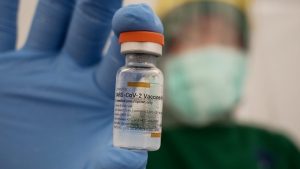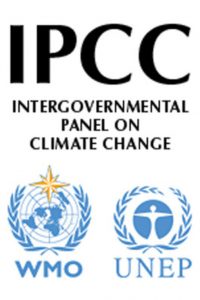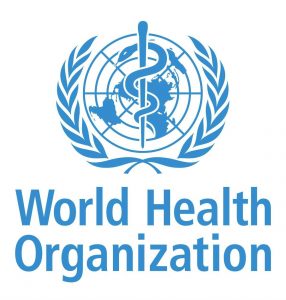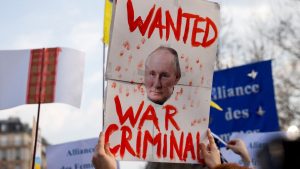Today Current Affairs: 6th April 2022 for UPSC IAS exams, State PSC exams, SSC CGL, State SSC, RRB, Railways, Banking Exam & IBPS, etc
Table of Contents
National Maritime Day 2022:

On 5th April National Maritime Day is celebrated across the country annually. This day has been dedicated to maritime trade’s role in the development of the country’s economy, and also the country’s strategic location as well as the role in global trade.
- India was an essential part of the Silk Route and acted as the node connecting Europe and the Middle East to the countries located in East Asia.
- This day is celebrated annually with a particular theme based on which all events are organized.
- The day also looks to improve the condition of India’s maritime trade and provides help so that it can reach new heights.
- This day holds the significance of the historical journey of the country’s maritime sector and is celebrated annually to cherish this history, the futuristic visions, and the ongoing development in the sector of maritime trade across the country.
- This day also celebrates the role of the maritime industry in boosting the Indian economy.
Fourth Crew Rotation : NASA’s SpaceX

SpaceX and NASA are gearing up to launch astronauts to the International Space Station (ISS) as part of the Commercial Crew Program of NASA.
- This will be the fourth crew rotation mission and will be carrying an international crew consisting of four astronauts on a science expedition to the ISS.
- This mission will be launched on 20th April from NASA’s Kennedy Space Center’s Launch Complex 39A.
- The Kennedy Space Center is located in Florida.
- The crew that will be sent aboard the ISS will be spending several months conducting various maintenance and science aboard the orbiting space station.
- The astronauts will be returning to Earth in the fall of 2022.
- The crew will be riding on a new Crew Dragon spacecraft and will be launched on a Falcon 9 booster.
- As a tradition of naming a new capsule by the first riding astronauts, the crew chose the name “Freedom” to celebrate the fundamental human right.
- After docking at the space station, the Crew-4 astronauts will be welcomed by Expedition 67’s seven-member crew.
- Several days after Crew-4’s arrival the astronauts of the Crew-3 mission will be undocking from the ISS and will splash down off Florida’s coast.
- The crew consists of NASA astronauts Bob Hines, Kjell Lindgren, and Jessica Watkins, along with Samantha Cristoforetti of the European Space Agency. The commander of the Crew-4 mission and the Crew Dragon spacecraft is Lindgren.
Biological E. Has Been Selected To Receive mRNA Technology From WHO Transfer Hub:

Vaccine maker Biological E. has been selected to receive mRNA technology from the World Health Organization technology transfer hub.
- WHO’s technology transfer hub primarily set up to address the Covid-19 emergency, WHO’s technology transfer hub has the potential to expand manufacturing capacity for other products as well, including treatments, and target other priorities such as malaria, HIV and cancer.
- Messenger RNA or mRNA technology works by teaching our cells to recognize and protect us against infectious diseases. One of the challenges with this new technology is that it must be kept cold to maintain stability during transport and storage.
- mRNA vaccines trick the body into producing some of the viral proteins itself.
- They work by using mRNA, or messenger RNA, which is the molecule that essentially puts DNA instructions into action.
- Inside a cell, mRNA is used as a template to build a protein.
- To produce an mRNA vaccine, scientists produce a synthetic version of the mRNA that a virus uses to build its infectious proteins.
- This mRNA is delivered into the human body, whose cells read it as instructions to build that viral protein, and therefore create some of the virus’s molecules themselves.
- These proteins are solitary, so they do not assemble to form a virus.
- The immune system then detects these viral proteins and starts to produce a defensive response to them.
- There are two parts to our immune system: innate (the defences we’re born with) and acquired (which we develop as we come into contact with pathogens).
- Classical vaccine molecules usually only work with the acquired immune system and the innate immune system is activated by another ingredient, called an adjuvant.
- Interestingly, mRNA in vaccines could also trigger the innate immune system, providing an extra layer of defence without the need to add adjuvants.
Cybersecurity Skills Development Campaign : Microsoft

Microsoft has introduced a cybersecurity skills development campaign in 23 geographies, including India, to address the alarming shortage of internet security professionals.
- By 2025 there will be 3.5 million cybersecurity jobs available globally, representing a 350% increase over an eight-year period, as per Cybersecurity Ventures.
- By that time, India alone is estimated to have almost 3.5 lakh cybersecurity job positions waiting to be filled, both in the private and public sectors.
- Cyber crimes in India caused Rs 1.25 trillion loss in 2019.
- Cyber threats will continue to increase as the country starts developing smart cities and rolling out 5G network, among other initiatives.
- There are only a few Indian companies who are making some of the cyber security products and there is a big vacuum in the sector.
IPCC: Sixth Assessment Report

The United Nations’ climate science body, the Intergovernmental Panel on Climate Change (IPCC) published the third part of its Sixth Assessment Report (AR6).
- This second part of the report was published in March 2022 which was about climate change impacts, risks and vulnerabilities, and adaptation options.
- The first part of this report, on the physical science of climate change was published in 2021. It had warned that 1.5 degree Celsius warming was likely to be achieved before 2040 itself.
Key Findings of the Report:
- In 2019, global net anthropogenic Greenhouse gas (GHG) emissions were at 59 Gigatonnes of carbon dioxide equivalent (GtCO2e), 54% higher than in 1990.
- The average annual rate of growth slowed to 1.3% per year in the period 2010-19, compared to 2.1% per year in the period 2000-09.
- At least 18 countries have reduced GHG emissions for longer than 10 years on a continuous basis due to decarbonisation of their energy system, energy efficiency measures and reduced energy demand.
- Carbon inequality remains pervasive as ever with Least Developed Countries (LDCs) emitting only 3.3% of global emissions in 2019.
- Their average per capita emissions in the period 1990-2019 were only 1.7 tonnes CO2e, compared to the global average of 6.9 tCO2e.
- LDCs contributed less than 0.4% of total historical CO2 emissions from fossil fuels and industry in the period 1850-2019.
- Globally, 41% of the world’s population lived in countries emitting less than 3 tCO2e per capita in 2019.
- It also adds that demand-side mitigation, ie, behavioural changes such as adopting plant-based diets, or shifting to walking and cycling “can reduce global GHG emissions in end use sectors by 40-70% by 2050 compared to baseline scenarios” and improve wellbeing.
- Most of the potential for demand-side mitigation currently lies in developed countries.
- The IPCC states that low-cost climate mitigation options could halve global GHG emissions by 2030. In fact, the long-term benefits of limiting warming far outweigh the costs.
- Financial flows fall short of the levels needed to achieve the ambitious mitigation goals, however.
- The gaps are the widest for the agriculture, forestry, and other land uses (AFOLU) sector and for developing countries.
Intergovernmental Panel on Climate Change:
- It is the international body for assessing the science related to climate change.
- It was set up in 1988 by the World Meteorological Organisation (WMO) and United Nations Environment Programme (UNEP) to provide policymakers with regular assessments of the scientific basis of climate change, its impacts and future risks, and options for adaptation and mitigation.
- IPCC assessments provide a scientific basis for governments at all levels to develop climate related policies, and they underlie negotiations at the UN Climate Conference – the United Nations Framework Convention on Climate Change (UNFCCC).
Air Quality Database 2022: WHO

Ahead of the World Health Day (7th April), the World Health Organisation (WHO) has released Air Quality Database 2022, which shows that Almost the entire global population (99 %) breathes air that exceeds WHO’s air quality limits.
- The WHO for the first time has taken ground measurements of annual mean concentrations of nitrogen dioxide (NO2). It also includes measurements of Particulate Matter with diameters equal or smaller than 10 μm (PM10) or 2.5 μm (PM2.5).
- The findings have prompted WHO to highlight the importance of curbing fossil fuel use and taking other tangible steps to reduce air pollution levels.
- Earlier, in the 2021 World Air Quality Report released by IQAir (a Swiss group), India was home to 11 of the 15 most polluted cities in Central and South Asia in 2021.
Findings:
- More than 6,000 cities in 117 countries are now monitoring air quality but their residents are still breathing unhealthy levels of fine particulate matter and nitrogen dioxide, while people in low and middle-income countries suffer the highest exposure.
- As many as 2,000 more cities and human settlements are now recording ground monitoring data for particulate matter, PM10 and/or PM2.5, than in the last update (2018).
- This marks an almost sixfold rise in reporting since the database was first made in 2011.
- Meanwhile, evidence base for the damage air pollution does to the human body has been growing rapidly and points to significant harm caused by even low levels of many air pollutants.
- Particulate matter, especially PM 2.5, is capable of penetrating deep into the lungs and entering the bloodstream, causing Cardiovascular, Cerebrovascular (stroke) and Respiratory Impacts.
- NO2 is associated with respiratory diseases, particularly asthma, leading to respiratory symptoms (such as coughing, wheezing or difficulty breathing), hospital admissions and visits to emergency rooms.
- In the 117 countries monitoring air quality, the air in 17% of cities in high-income countries falls below WHO’s air quality guidelines for PM 2.5 or PM 10.
- In low and middle-income countries, air quality in less than 1% of the cities complies with WHO recommended thresholds.
What Is NFC Technology:

Google Pay has recently launched a new feature in India, ‘Tap to pay for UPI’, in collaboration with Pine Labs. The feature makes use of Near Field Communication (NFC) technology.
- The functionality will allow users with NFC-enabled Android smartphones and UPI (Unified Payments Interface) accounts linked to Google Pay to carry out transactions just by tapping their phones on any Pine Labs Android point-of-sale (POS) terminal across the country.
- The process is much faster compared to scanning a QR code or entering the UPI-linked mobile number which has been the conventional way till now.
- In February 2022, Apple introduced Tap to Pay on the iPhone.
- NFC is a short-range wireless connectivity technology that allows NFC-enabled devices to communicate with each other and transfer information quickly and easily with a single touch – whether to pay bills, exchange business cards, download coupons, or share a document.
- NFC transmits data through electromagnetic radio fields, to enable communication between two devices.
- Both devices must contain NFC chips, as transactions take place within a very short distance.
- NFC-enabled devices must be either physically touching or within a few centimetres from each other for data transfer to occur.
- In 2004, consumer electronics companies, Nokia, Philips and Sony together formed the NFC Forum, which outlined the architecture for NFC technology to create powerful new consumer-driven products.
- Nokia released the first NFC-enabled phone in 2007.
- NFC technology is used in contactless banking cards to perform money transactions or to generate contact-less tickets for public transport.
- Contactless cards and readers use NFC in several applications from securing networks and buildings to monitoring inventory and sales, preventing auto theft, and running unmanned toll booths.
- It is present in speakers, household appliances, and other electronic devices that are controlled through smartphones.
- It also has an application in healthcare, to monitor patient stats through NFC-enabled wristbands. NFC is used in wireless charging too.
Broadcast Seva Portal:

The Ministry of Information and Broadcasting has launched the Broadcast Seva (BS) Portal.
- The portal is likely to help 900 satellite TV channels, 70 teleport operators, 1,700 MSOs, 350 Community Radio Stations (CRS) and 380 private FM channels, among others.
- It is a 360 degree digital solution that will facilitate stakeholders in seeking permissions, applying for registration, tracking applications, calculating fees and executing payments.
- This portal will provide its services under the wider umbrella efforts of Digital India to all stakeholders to private satellite TV channels, teleport operators, Multi-Service Operators (MSOs), community and private radio channels, etc.
- Objective: To provide a single point facility to the stakeholders and applicants to apply for various registrations, permissions and licences issued by I&B Ministry for broadcast related activities.
- It will reduce the turnaround time of applications and, at the same time, will help applicants track the progress.
- Improving India’s business climate is one of the key focus areas of the Government of India and the Broadcast Seva Portal exemplifies the government’s commitment to ease of doing business and empowering the broadcasting sector.
- The portal will enable establishment of an efficient and transparent system for the growth and management of the Broadcast sector.
- It is in line with the vision of promoting Make in India and Digital India initiatives.
President Of Serbia : Aleksandar Vucic

Aleksandar Vucichas been re-elected as the President of Serbia. The pollster organizations CeSID and Ipsos had predicted victory for Vucic.
- The pro-European and centrist Alliance for Victory coalition was represented by Zdravko Ponos, a retired army general.
- The pollsters had predicted that Vucic’s Serbian Progressive Party (SNS) would win most of the votes with 43 percent and they would be followed by the United for Victory of Serbia opposition.
- In third place stood the Socialist Party of Serbi
- Aleksandar Vucicis serving as Serbia’s president since 2017, and since 2012 he has been serving as the president of the Serbian Progressive Party (SNS).
- He has served as the President for two terms, from 2014 to 2016 and from 2016 to 2017.
- In 2017, he was first elected as the country’s President and succeeded Tomislav Nikolic. Vucic’s rule has been described by observers as an autocratic, authoritarian, illiberal democratic regime, and he curtailed the freedom of the press.
India’s New Foreign Secretary : Vinay Mohan Kwatra

The Indian government has named Vinay Mohan Kwatra who is the country’s ambassador to Nepal, as India’s next Foreign Secretary. He will be taking charge after incumbent Harsh Vardhan Shringla retires on 30th April.
- Vinay Mohan Kwatra is an Indian Foreign Service (IFS) officer and has 32 years of experience working in a range of assignments.
- From 2015 to 2017, he has worked in the Prime Minister’s office and then went to France as the ambassador of India.
Working in the permanent mission of India - In 1988, after joining the IFS he served as the Permanent Mission of India’s third secretary and later he became the second secretary which he served till 1993.
- He used to handle work related to the Human Rights Commission, and UN specialized agencies.
- He also obtained a diploma in International Relations from the Graduate School of International Studies located in Geneva.
Grammy Awards 2022 : Indian Winners

The 2022 Grammy Awards were held on 3rd March at the MGM Grand Garden Arena located in Las Vegas, Nevada. Trevor Noah hosted this event. Jon Batiste won the Best Album of The Year award.
- The award for the Best New Artist as well as for Best Pop Vocal Album was won by Olivia Rodrigo and Doja Cat won the award for Best Pop Duo/ Group.
- At the 64th Annual Grammy Awards, two Indian musicians were among the winners.
- Falu, an Indian-American singer-songwriter won her maiden Grammy in the category of Best Children’s Music Album.
- Composer Ricky Kej also won his second Grammy as he and Stewart Copeland won the award in the category of Best New Age Album.
- Falguni Shah or Falu won the award for her album A Colorful World in the category of Best Children’s Music Album.
- Falu is a New York-based musician and has collaborated with AR Rahman for the movie Slumdog Millionaire.
- In Mumbai, under the legendary vocal master and sarangi Ustad Sultan Khan, she had received her early music training. She also performed in the opening number of the GRAMMY Premiere Ceremony and later won her award.
- In 2015, Ricky Kej had won his first Grammy Award and this win was his second. He won the award with Stewart Copeland for the album Divine Tides. He won the award in the Best New Age Album category.
What Is a War Crime?

Germany, France and other countries have accused Russia of war crimes in the town of Bucha just outside Ukraine’s capital Kyiv.
- The mayor of Bucha said on Saturday that 300 residents had been killed by Russian troops during a month-long occupation.
- Victims were seen by Reuters in a mass grave and lying in the streets.
- The International Criminal Court in The Hague defines war crimes as “grave breaches” of the post-World War Two Geneva Conventions, agreements which lay out the international humanitarian laws to be followed in war time.
- Breaches include deliberately targeting civilians and attacking legitimate military targets where civilian casualties would be “excessive”.
- The meaning of war crimes was clarified in 1949 Geneva Conventions.
- Article 147 of the Fourth Geneva Convention defines war crimes as “wilful killing, torture or inhuman treatment, including wilfully causing great suffering or serious injury to body or health, unlawful deportation or transfer or unlawful confinement of a protected person taking of hostages and extensive destruction and appropriation of property, not justified by military necessity and carried out unlawfully and wantonly”.
- The ICC will issue an arrest warrant if prosecutors can show “reasonable grounds to believe” war crimes were committed.
- To obtain a conviction, the prosecutor would have to prove a defendant’s guilt beyond a reasonable doubt.
- For most charges, that requires proving intent.
- One way to do this would be for a prosecutor to show there were no military targets in the area of an attack and that it was not an accident.
Appearance Of Amazon And Future Group Before Singapore International Arbitration Centre:

Amazon and Future Group have agreed to appear before the Singapore International Arbitration Centre (SIAC), the parties informed the Supreme Court (SC) recently.
- The Supreme court was hearing Amazon’s application seeking directions to restrain Future Retail from alienating its retail assets till the arbitration proceedings between the US-based E-commerce giant and the Kishore Biyani-owned group at Singapore International Arbitration Centre (SIAC) are completed.
- Amazon and Future group are engaged in litigation at multiple legal portals on the issue of FRL’s merger deal to the tune of Rs 24713 crore with Reliance Retail Limited (RIL).
- The SIAC in 2020 restrained Future from selling its assets to RIL.
- The parties in a deal usually sign a contractual agreement which specifies about:
- The arbitral institution administering the arbitration.
- The applicable rules.
- The seat of arbitration.
- In this case Amazon and Future Group have under their agreement agreed to refer their disputes to SIAC, with Singapore presumably being the contractual choice for the seat/place of arbitration.
- Once a dispute is referred to arbitration, the process of appointment of the arbitral tribunal takes place.
- Typically, in case of a three member tribunal, both the parties appoint one member each to the tribunal, while the third member is jointly appointed by the two nominees or, if they fail to agree, by SIAC.
- Appointment of the arbitral tribunal usually takes time.
- Therefore, under the rules of SIAC, parties can move SIAC to appoint an emergency arbitrator to get urgent interim relief, even as the process of appointment of the main arbitral tribunal is underway.




